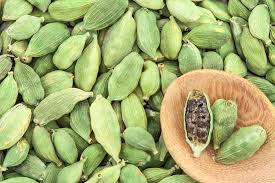Big cardamom, a key spice in the global market, is currently facing significant supply disruptions due to adverse weather conditions. Floods and heavy rains in major producing states such as Assam have caused irregular auctions, impacting both the availability and pricing of this essential spice. The severe weather has led to considerable damage to the upcoming crop, resulting in weak spot sales and limited fluctuations in prices. The situation has worsened with estimates indicating a 60-70 percent loss to the first crop, with similar expectations for the second crop. High temperatures and insect attacks have compounded the problem, leaving domestic availability far below normal levels.
The impact of the adverse weather is not confined to India alone; neighboring countries like Nepal, Bhutan, and Sikkim have also reported significant crop losses. In Nepal, the arrival of 500 to 1000 sacks of big cardamom daily has been noted, with costs higher than usual and expected to rise further. Despite these supply challenges, India’s cardamom exports have shown resilience. In the early months of the financial year 2024-25, exports reached 152.39 tonnes, a significant increase from the previous year’s 44.27 tonnes, highlighting the strong demand for big cardamom despite ongoing supply constraints.
The current market situation presents challenges for exporters who need to stay updated on market trends and potential supply disruptions. Although current prices reflect the limited supply, a rise in sales could drive prices higher in the near future. Exporters should closely monitor weather conditions and auction trends to make well-informed decisions. To navigate these volatile conditions, several strategies could be considered. Diversifying sourcing regions might help mitigate the impact of regional weather issues, while investing in weather-resistant crop varieties and advanced farming techniques could improve resilience against adverse conditions. Strengthening relationships with local farmers and cooperatives could also ensure a more reliable supply chain.
On the international front, exploring new markets and expanding the customer base may help offset domestic supply constraints. Building a robust network of buyers and using market intelligence to anticipate demand shifts will be crucial. Additionally, exporters should stay informed about policy changes and trade regulations in key importing countries to smoothly navigate any potential barriers. In the long term, addressing the root causes of supply disruptions through sustainable agricultural practices will be essential. Promoting environmentally friendly farming methods and reducing dependency on regions prone to adverse weather can help stabilize the supply chain. Collaboration with government bodies and agricultural research institutions could further aid in developing strategies to combat the impacts of climate change on big cardamom production.
As the market deals with these challenges, maintaining transparency and open communication with stakeholders will be important. Providing timely updates on supply status, weather impacts, and market trends will help build trust and ensure informed decision-making. By proactively managing risks and seizing opportunities, exporters can sustain their operations and even thrive in the dynamic big cardamom market. The future of the market will largely depend on how well producers and exporters adapt to these changing conditions. Embracing innovative solutions and fostering collaboration will be key to overcoming current obstacles and paving the way for a more resilient and prosperous future.
